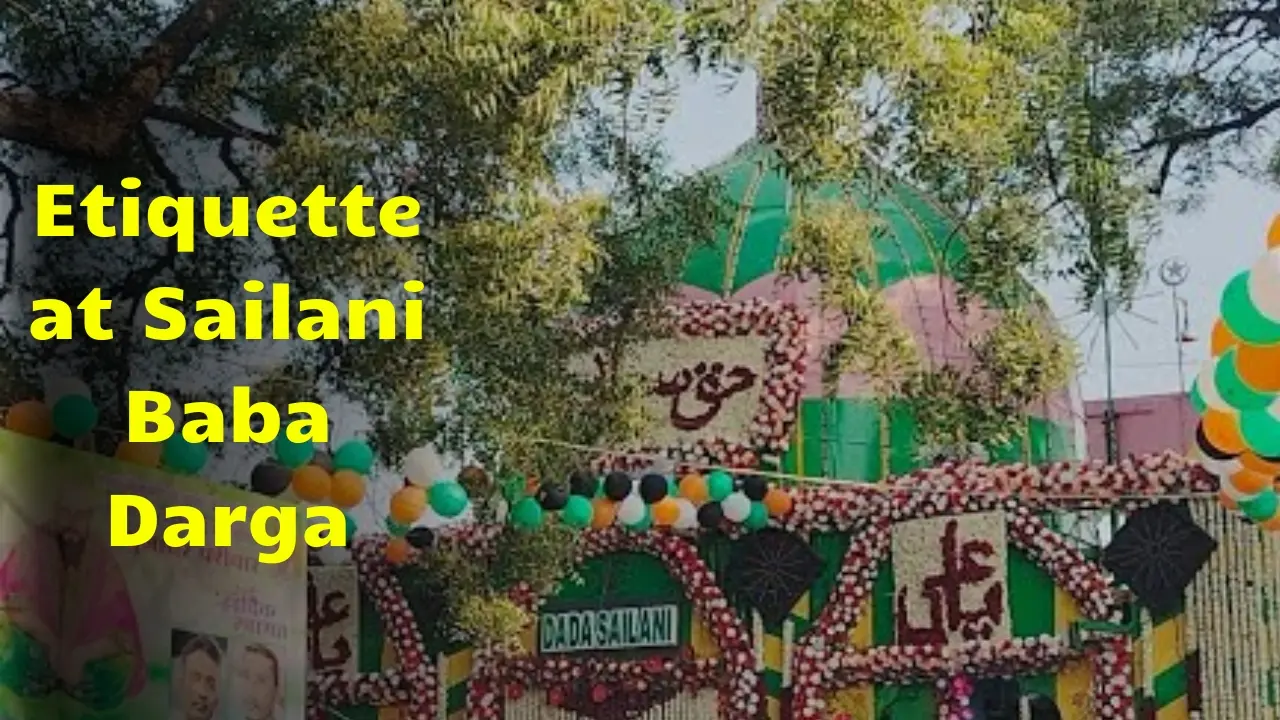Sailani Baba Dargah in Pimpalgaon Sarai, Buldhana, is a peaceful spiritual place where people from all religions come to pray. Every day, the Dargah follows a fixed routine of prayers, aartis, and rituals that keep the atmosphere full of faith and devotion. Understanding the daily schedule helps devotees plan their visit better and join the prayers at the right time.
Morning Routine and Opening of the Dargah
The Dargah opens early in the morning at around 5:00 AM. The first sound heard is the call for prayer, which marks the beginning of a new day. Caretakers clean the inner hall, light lamps, and spread fragrance by burning incense. Devotees start arriving quietly, offering flowers and chadar on the tomb of Sailani Baba. The peaceful morning air helps everyone feel calm and thankful. Morning prayers usually continue until noon, after which the Dargah closes for cleaning and rest.
Morning Aarti and Prayers
The first aarti, known as the Fajr or morning prayer, is performed soon after sunrise. It begins with verses praising the Almighty and Sailani Baba’s service to humanity. Devotees stand together, heads covered, listening to prayers recited by the caretakers. The sound of dhol, chimta, and soft qawwali music fills the hall. After the aarti, devotees walk slowly around the tomb, touch the floor with respect, and make silent wishes. Many also tie green threads on the window railing to show their trust in Sailani Baba’s blessings.
Midday Routine
From 12:00 PM to 3:00 PM, the Dargah remains closed for cleaning. During this time, caretakers wash the floors, polish the lamps, and prepare fresh flowers. The nearby langar kitchen becomes active, cooking vegetarian meals for staff and visitors. By 3:00 PM, the Dargah reopens for afternoon prayers. The midday environment stays quiet; visitors prefer to sit and meditate. Some read holy verses or offer private prayers for family well-being.
Evening Aarti and Prayer Session
The most popular time at the Dargah is evening, between 6:00 PM and 9:00 PM. As the sun sets, the lamps inside and outside the shrine are lit. The evening aarti, called Maghrib or Sandhya Aarti, begins with melodious qawwali and the rhythmic beating of drums. The priest or caretaker leads the prayers, and devotees repeat the verses softly. The lighting ceremony creates a beautiful sight as the golden glow of lamps reflects on the marble floor. The fragrance of attar and incense spreads everywhere, giving a deep sense of peace. Many devotees believe evening darshan brings the strongest blessings.
Thursday and Friday Special Prayers
Thursday and Friday are considered sacred at Sailani Baba Dargah. On these days, more people visit, and additional prayer sessions are arranged. The Thursday evening qawwali is famous across the district. Singers perform devotional songs that describe Sailani Baba’s life and miracles. On Fridays, a large community prayer takes place at noon, followed by free food distribution. Devotees who cannot come daily often visit on these two days to experience the full spiritual energy of the Dargah.
Qawwali and Sufi Music Tradition
Music plays a big role in daily worship. Qawwali performances happen mostly in the evenings, where groups of singers praise God and saints through Sufi verses. The rhythm, words, and devotion make the listeners feel connected to the divine. Many visitors close their eyes during qawwali and pray silently. The music is not entertainment but a way of remembering God and Sailani Baba’s message of love and equality.
Candle and Lamp Lighting Ritual
At sunset, devotees light small lamps or candles near the main hall. This ritual symbolizes removing darkness from life. Families often bring oil lamps from home and light them together. The caretaker ensures that all lamps stay safe and properly placed. Lighting a lamp is believed to bring blessings for peace, health, and success.
Offering of Flowers and Chadar
Offering flowers and chadar is a main part of the daily prayer routine. Devotees bring fresh roses, jasmine, or marigold garlands. They place them gently on the tomb with folded hands. A chadar is spread by the caretaker while prayers are read aloud. It represents respect, surrender, and faith. Visitors may also donate a new chadar for upcoming special days or Urs celebrations.
Langar and Food Offering
After evening prayers, many devotees visit the langar area where simple vegetarian food is served free to everyone. Volunteers prepare and serve the food with devotion. Eating langar together teaches equality and kindness, values Sailani Baba always preached. On Fridays and during Urs, the langar continues till late at night so that every visitor can eat.
Urs Day Rituals
The Urs, or death anniversary of Sailani Baba, is the most important annual event. On this day, special aartis are held from early morning till midnight. The tomb is decorated with thousands of flowers, and long qawwali sessions take place. A special lamp lighting ceremony begins after sunset. Thousands of devotees join together, and the entire area glows with faith and devotion. The rituals remind people of Sailani Baba’s teachings about peace, service, and unity.
Rules to Follow During Aarti
Visitors should stand silently during the aarti and avoid pushing or talking. Head covering is required for both men and women. Mobile phones must remain silent. Taking photos or videos during the aarti is not allowed. Offer your flowers or chadar before the prayers start. If the area is crowded, wait patiently and do not block the path of others. Respect the volunteers who manage the lines and guide visitors.
Importance of Prayers at the Dargah
Prayers at Sailani Baba Dargah are not limited to one community or religion. They are open to everyone who believes in goodness and faith. Many devotees share that regular visits and prayers have brought peace and positive change in their lives. The Dargah teaches that true worship means helping others, staying humble, and trusting God during hard times.
Etiquette After Prayer
After offering prayers, devotees usually sit quietly for a few minutes and reflect on their wishes. Some read verses or offer thanks to Sailani Baba before leaving. When exiting, it is polite to walk slowly and not turn your back quickly to the tomb. Outside the gate, you may distribute sweets or water as a token of gratitude. Always greet volunteers and elders with respect.
Conclusion
The daily aarti schedule and prayer rituals at Sailani Baba Dargah reflect centuries of faith and devotion. Every prayer, song, and lighted lamp keeps the saint’s teachings alive. Visiting during aarti time gives devotees a deep feeling of peace and spiritual connection. Whether you come in the calm morning or vibrant evening, the Dargah welcomes everyone with love. Following the simple routines, maintaining silence, and joining prayers sincerely make the visit meaningful. Sailani Baba’s blessings reach every devotee who comes with faith, respect, and a pure heart.







